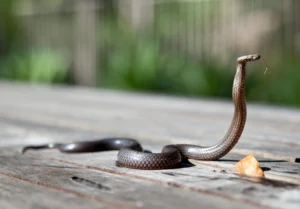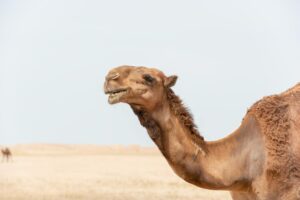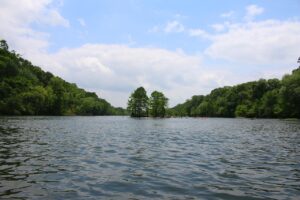A “strange” animal spotted in the Dubai desert!

A new and astonishing group of animals originating from Argentina has been found in the sand dunes in the heart of the UAE desert, just 40 kilometers from Dubai.
Reports indicated that there are a number of Patagonian maras, which are rabbit-like mammals with long legs, large ears, and bodies resembling hoofed animals, now roaming the lands of Al Qudra Lake (a series of interconnected artificial lakes surrounded by sand dunes), which is home to deer and other desert creatures in the United Arab Emirates.

The way this rodent, which is usually found in Argentina, arrived at Al Qudra Lake in the United Arab Emirates remains a mystery, where the herd has lived for several years in a network of burrows among the sand dunes.
The UAE Ministry of Climate Change and Environment and the authorities in Dubai did not respond to questions from the Associated Press about the presence of Patagonian capybaras.
One estimate suggests that up to 200 animals may have bred in the area and the nearby larger Al Marmoom Desert Conservation Reserve, where a few dead Patagonian cavies have been found.
A journalist from the Associated Press encountered at least five of these rodents during a recent visit to Al Qudra Lake, a vast desert area located about 40 kilometers (25 miles) south of downtown Dubai. In another visit, he saw multiple groups of animals, including a female still nursing her young.
The Patagonian capybara was first publicly seen in 2020, during the peak of the coronavirus pandemic. Its appearance was mentioned in the monthly newsletter of the Dubai Natural History Group, where the animals were described as being seen in both Al Qudra Lake and Saadiyat Island near the capital, Abu Dhabi.
Jackie Goodas, who has studied mammals in the United Arab Emirates for a long time, wrote in a chapter of the recently published book titled “The Natural History of the Emirates”: “This large rodent is a common species in zoo collections, and it undoubtedly found its way out of captivity.” He added that although this species is not adapted to living in a dry environment, the absence of usual predators like leopards has “allowed it to survive in modified environments containing tree farms, meadows, and ponds.”
And this is the precise environment found in Al Qudra Lake, which likely contributes to the continued survival of the Patagonian capybaras there, despite the temperatures in the United Arab Emirates regularly reaching 45 degrees Celsius (113 degrees Fahrenheit) in the summer with high humidity.
The number of individuals in Lake Al Qudra indicates that these animals are reproducing. The Patagonian cavy mates for life and can give birth to one to three offspring at a time.
In Argentina, these animals can be hunted and eaten, and their fur can be used in carpets and blankets.
The Patagonian capybara is an herbivorous animal and does not pose any threat to humans. Although this type of animal is displayed in zoos like Dubai Safari Park, its presence in the wild remains a mystery. However, it is believed that they may have been left in the wild after escaping from zoos or private farms in the area.




